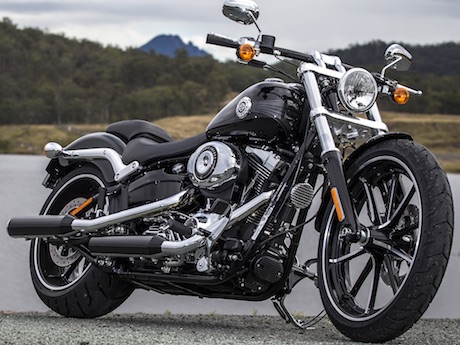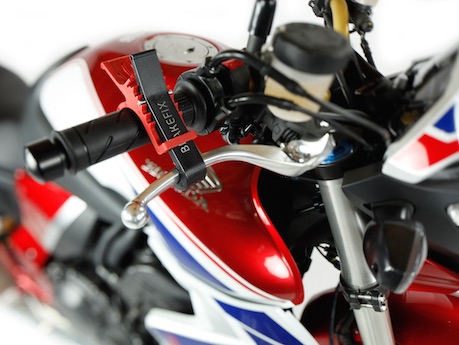Some motorcycles have sturdy and long sidestands and are very unlikely to roll off the sidestand, but some are too short, too flimsy and almost vertical which means almost any movement will have them toppling over.
But there are some simple, cheap, complex and expensive fixes for the age-old problem.
The cheapest and easiest is tying rubber bands or a bungee strap around the front brake lever.
Or you could chock a rock or lump of wood under the wheel, although you might need to carry around the bulky item as they aren’t always readily available wherever you park.
Or you could use straps or a chain to lash it to a fixture, but again that’s a bulky item to carry with you.
Or you could leave it in gear when you park, but on some slopes or steep driveways, or with some almost vertical sidestands, it can still roll away. (Make sure you move the bike just a bit to ensure compression locks it and stops it from moving.)
Or you could use the centre stand – if you have one – although it can be difficult to use on steep slopes.
Or you could buy a Harley-Davidson which has a brilliant patented locking sidestand.

Or you could buy a BrakeFix gizmo for a few dollars. (We’re not sure of the Aussie price, but they’re €9.99 in the UK, which is about $A20 or $US15.)

This compact item wraps around the throttle grip of your bike and the front brake lever. You then adjust the BrakeFix to apply light pressure to the front brake lever, preventing your bike from rolling forward or backwards and potentially falling over.
It’s small enough to fit in your jacket pocket, under your seat or in a tool pouch.
BrakeFix will work on just about any bike with a front brake lever, whether it’s a cruiser, touring bike, sportsbike, minibike, trailbike or quadbike.
The only problem I can see is that someone could easily steal it.
But it’s probably better than a rubber band because it looks nicer and would hold more brake pressure than a rubber band which could also snap.
BrakeFix is available in Australia through ProAccessories.
WARNING: Don’t park your bike up for months with the brake locked on as it can put the seals of a hydraulic system under load or may stretch the brake cable.


